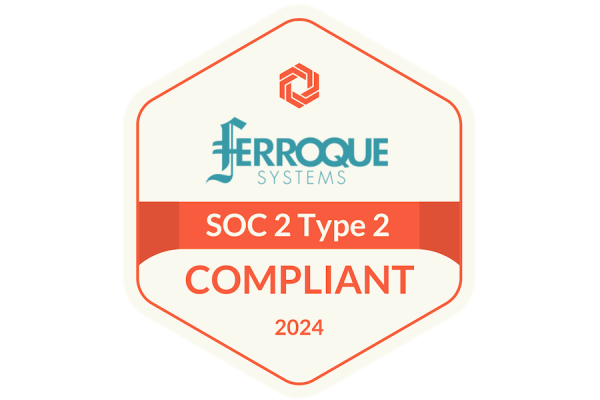
Working from Home, Network Performance, and the Challenges of the “Last Mile”
Here at Ferroque we talk a lot about what our clients and many others are experiencing in this new world of work where so many folks are working from home, and often sharing Internet links, Wi-Fi, and other technology with a spouse working from home and children doing remote learning.
There is a lot of anecdotal evidence that many people are experiencing poor or uneven performance with their VPN connections to work for both business applications, and certainly Zoom or MS Teams video, and a lot of focus from both the ISP vendor community, technical analysts, on the issue.
And of course, Internet links do tend to have moments in the average day where they are down/hung/ or not performing well, and that will play havoc with a critical work commitment to finish a document or a requirement to attend a critical video meeting.
There are a list of assumptions made about why this is happening:
- The ISP Internet link is not fast enough or reliable enough.
- Both the link and the Wi-Fi in the home are being shared by multiple users, people may be streaming video and music and interfering with work-related traffic, etc. (despite evolutions in Wi-Fi technology, wired connections will almost always be more stable).
- And the technologies being uses are consumer grade and won’t stand up to heavy work usage.
There is a commonly held belief system that enterprises MUST deploy more business-grade technology into the employee’s home in order to protect employee productivity and end-user experience. So you will see the Rogers/Bell/Telus and Shaws (Some of the largest telcos up here in Canada) of the world advocate for:
- Business-grade Internet links that are engineered to be faster and more reliable, and have specific service commitments (for more $$ of course). Some scenarios recommend a separate Internet link entirely, leaving a separate link for the family’s home use. Others just put one business-grade circuit in and let it be shared between work traffic and home/personal traffic.
- Often the vendors will recommend a separate WI-Fi network and router for business traffic to isolate it from the home education traffic, streaming music and video, etc.
In Ferroque’s view, there is nothing wrong with these recommendations per se. They will help with performance but cost someone (likely the employer) a lot more money, add potentially a lot more equipment into the employee’s home, and generally add complexity in that there is now a business network being deployed to potentially thousands of more locations that need to be tracked, monitored and maintained.
In a world where we really believe that employees need to be able to access work applications and data from any device/anywhere, and where the lines between enterprise technology and consumer technology are blurring more all the time, Ferroque believes there are better ways:
First, we believe in virtual (digital) workplaces. A virtual workplace means the employee’s desktop applications and data are securely created and managed in a central data centre or cloud location.
- The desktop applications are now much closer to the actual application servers so performance is better.
- Only keyboard input and screen refreshes traverse the network, reducing load and further improving performance.
- The organizations maintain greater control over data and security, by dramatically reducing data exfiltration or attack vectors by merely “presenting” the workspace to the end user’s endpoint device (which can also be any device we can throw the necessary client software on). This is significantly superior to client VPN solutions which effectively extend the corporate network into the home where the organization has limited control and visibility into the rest of the network or endpoint they’ve now bridged access to.
- Although video and audio traffic stays much the same for Zoom and the other tools, end-to-end virtual workspace ecosystems provide optimization and compression capabilities for multi-media traffic through various technological enhancements.
- There are policies and tuning functions within the Citrix HDX stack, for example, that can optimize the performance of virtual apps and desktop sessions for users connecting from a variety of different Internet links to accommodate those with less than stellar connectivity.
- Software-based SD-WAN tools such as “Speedify”, to combine broadband Internet and cellular links into a single connection, providing more backup and bandwidth and ensuring you can get important work done in a more consistent way.
- SD-WAN vendors such as Citrix have been progressively investing in last-mile enhancing technologies such as the SD-WAN 110 and 110 LTE devices to assist in overcoming deficiencies in home networks and offices with suboptimal Internet connectivity. A great walk-through of this use case can be found in this short video.
We also believe that without defining who should pay for capabilities, modern consumer technologies can support a great work from home experience without necessarily duplicating work and personal equipment and solutions, particularly if you are using a virtual workspace to minimize enterprise application traffic.
- We mentioned above, the Speedify “Bonded Connection” solution which by using both consumer broadband and Cellular links, provides a more robust network connection. SD-WAN vendors such as Citrix have been progressively investing in last-mile enhancing technologies such as the SD-WAN 110 and 110 LTE devices to assist in overcoming deficiencies in home networks and offices with suboptimal Internet connectivity. A great walk-through of this use case can be found in this short video. Remember when we use to talk about SOHO? Small office/home office :). This Citrix Tech Zone link covers some more practical details of these devices under such a scenario.
- An alternative to client VPN, solutions such as Aruba’s RAP devices are designed for remote offices or work-from-home use cases wherein the device establishes a site-to-site VPN over the end-user’s Internet link to the corporate WAN, which solves some but not all of a client VPN’s security shortcomings, and may overcome certain technical limitations that exist today at the time of this post (such as Linux-based Citrix Workspace App clients which cannot perform UDP audio redirection via DTLS on a Citrix Gateway unlike its OS contemporaries).
- Cellular speeds and performance will improve exponentially as service providers roll out something called 5th generation (5G) cellular networks, which will support both the bonding mentioned above and direct Internet links. Several smartphones released in 2020 have this functionality, albeit so far this year 5G hotspot devices haven’t made their way into consumer’s hands just yet.
- And the ISP providers will continue to offer better consumer Internet plans, driven by competition and demand.
- Modern “Wi-Fi 6” mesh router systems are readily available from consumer channels like Amazon, Best Buy, Google, etc. These solutions are designed to support high-speed networking, multiple video streaming sessions that do not interfere with each other, and in most cases will remove the fear that an online education video will conflict with a parent’s work.
So we have a tiered set of recommendations:
- Generally, we would say the best strategy is to avoid putting a lot more equipment or network connections on the company’s books.
- Work with your employees to deploy the right consumer technologies that will help deliver a great work experience including evaluating their Internet links and options available to them at their location (as this can vary widely based on locale).
- Figure out the most equitable way to share the cost (a stipend, BYOD, a sponsored employee purchase program etc.). But leave the employee accountable for managing the relationships with the service and equipment provider. It is too hard for employers to manage technology in employee’s homes!
- And remember, utilization of home Internet will always skew to the personal use of video streaming. Work-related traffic will utilize a smaller portion of the available capacity.
- There are always exceptions to every strategy. Some critical employees or functions may need more support, and in those cases consider deploying more capability like the SD-WAN 110 appliance or other technologies that can improve the resilience and robustness of the employee’s connection to corporate IT resources.
- And remember, Ferroque believes that the basis for this employee experience is very much the migration to virtual workspaces!
Ferroque Systems can help you on this journey!
- Let us help you move your workforce to a virtual workplace solution, which makes it much easier to deliver that great employee experience and improve security! We can build and manage the virtual infrastructure, deliver the software configurations which solve last-mile issues, and ensure your workforce is truly ready for the expanding distributed work era.
- We can help you set appropriate technology standards for employee home setups.
- And if required, design and deploy specific technologies like the SD-WAN 110 for critical employee groups.
Contact us at your convenience, we’d be happy to have a conversation.








